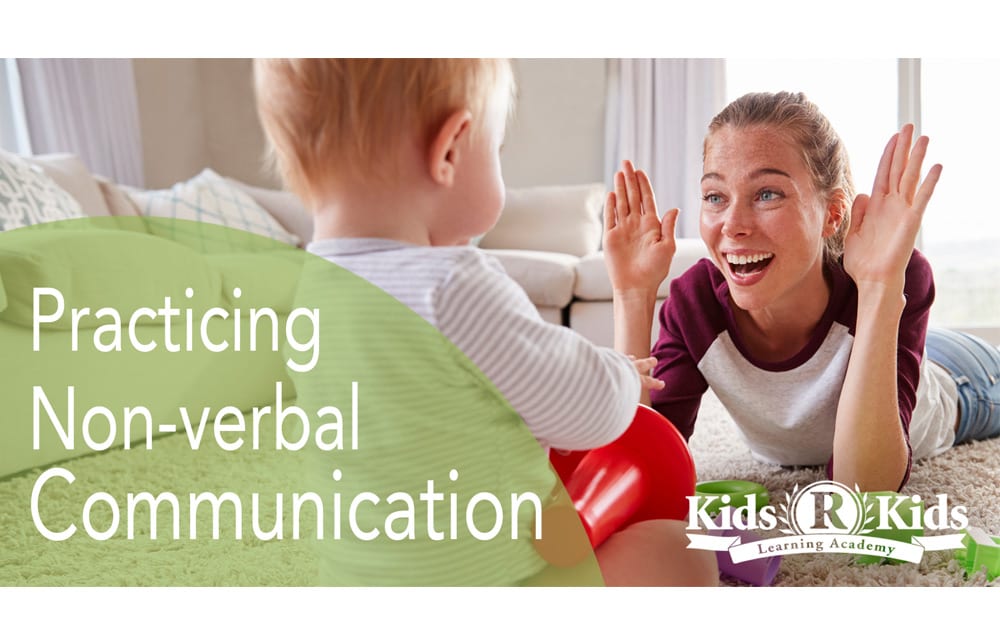Recent studies have shown that non-verbal communication is not only the first form of communication we learn as babies, but is also crucial and beneficial to the development of verbal communication. Nonverbal communication both at home and in the classroom are immensely important in a child’s emotional, social, and intellectual development. Simple things like hugging, kissing, smiling, or hand holding affirm positive trust in a child. As common and natural as positive nonverbal communication occurs, so does negative. Frowning, wagging fingers, turning your back, etc. also affect how a child perceives emotions and his surroundings. This is essential because it is what strengthens your verbal messages to your child. Children start to understand that a smile means “What you did was good” and a frown means “What you did was not acceptable”. This foundation of understanding through nonverbal communication is how children start to understand how to communicate their thoughts and emotions.
Eventually, your child will also start using nonverbal communication to tell you how he feels. He will laugh if he is comfortable, he will look away if he is uncomfortable. The first forms of communication a baby uses are these nonverbal cues. New parents may see how their child turns their head to one side when they are saying “No” to the rest of the bottle, signaling they are full.
The importance of nonverbal communication is that it aids a child’s ability to comprehend verbal communication. There are several little things you can do with nonverbal communication to help your child understand more complex verbal communications.
Eye contact. Be sure to always try and make eye contact when speaking with your children. Eye contact lets them know you are interested and serious about what they are trying to communicate to you, and makes them feel important.
Keeping engaged posture. It is also important to keep your body language open and receptive to your child. Facing your child, bending down to their level, and smiling, are examples of positive body language. Crossing arms, turning your back, and looking elsewhere are examples of negative body language and may make your child feel as though you are not listening to her.
Working together. When you actively work on a problem with your child, like wiping dirt off their clothes when they fall, or using a tissue to wipe noses, it makes your child feel like you actively care to help fix their problems.
Sounds and gestures. The most obvious form of nonverbal communication is hand gestures, like waving, thumbs up, or clapping. That, coupled with sounds like “hmm” or “uh-oh” are the very first ways we interact with our kids without using words. They learn the meanings of these gestures and sounds very early and it forms how they think of the situation in which these elements are being used.
Relax. It is not always easy to stay relaxed when when juggling a hectic life children. Most parents are stressed at some point in the day while trying to handle multiple tasks. When you are spending time with your child, try to remain relaxed. It is often hard to miss the fun, sweet moments with your child when your mind is on cleaning the house, or preparing the next meal, but when you are relaxed and engaged with your child, it makes them feel relaxed too, and those sweet moments are the ones you’ll remember for a lifetime.
When you practice these nonverbal communication skills with your child, they learn to use them too. Studies have shown that children who have actively been taught and given nonverbal forms of communication and empathy grow up to be more successful in their verbal communication and therefore, in social situations that give them an advantage in life. Communication is a key part of a healthy society so it’s never too early to teach these skills.